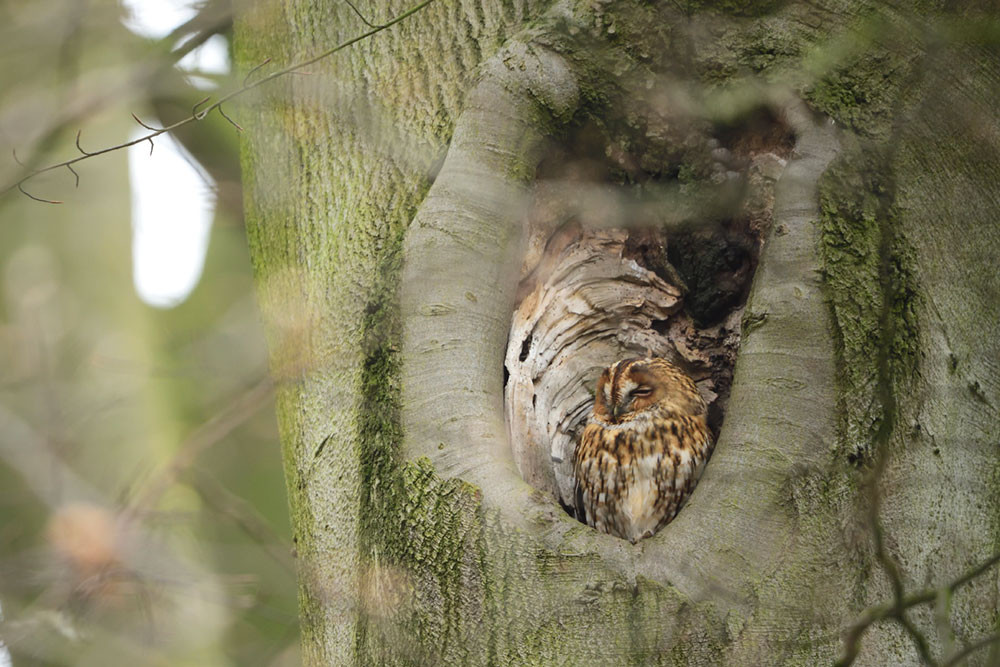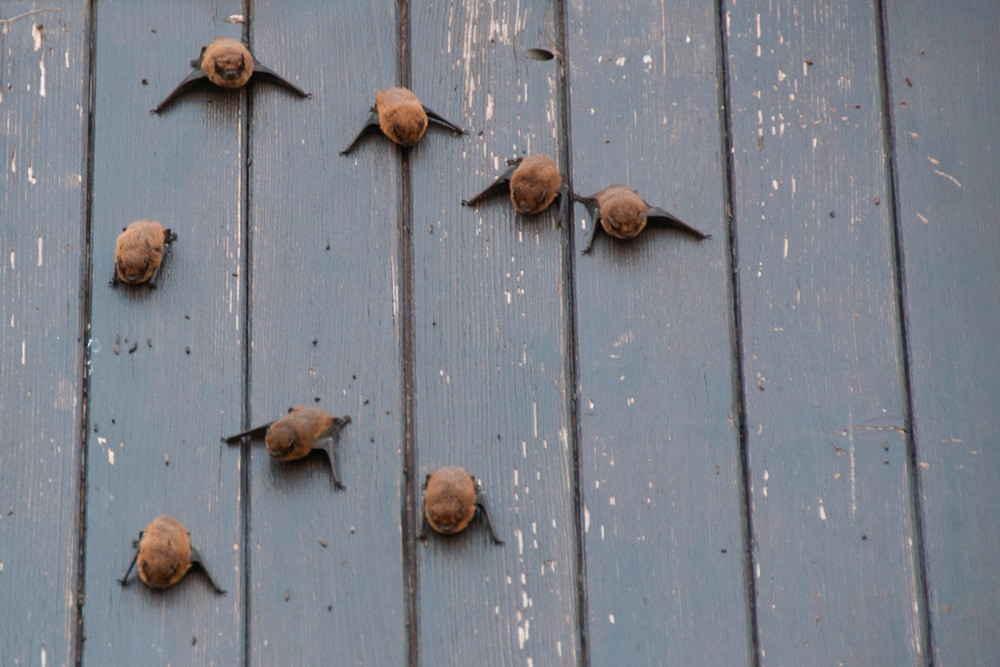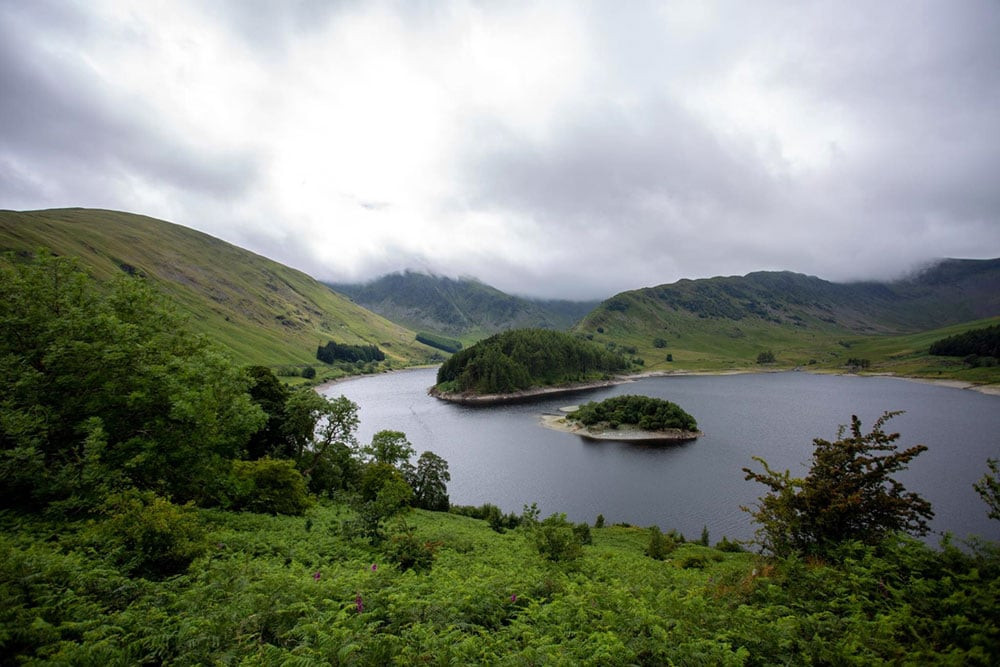Nocturnal animals
For many, the amber sun setting over the fells marks the day’s end. But in the wilder corners of the Lake District, the hustle and bustle of the day transitions into a wild ‘nightlife’, as creatures of the night begin to emerge. Heather Devey from RSPB Haweswater introduces us to some of the nocturnal sounds – and (if you’re lucky) sights – you may encounter wandering around The Lakes at night.

Tawny Owls
With a “too-wit” and a “too-woo” a woodland becomes cloaked in the enchantment of night. The quivering echo has become associated with ghost tales and all things spooky, but to hear the call of the Tawny Owl through gnarled, ancient Lake District woodlands is enlivening – a real call of the wild.
Heard mostly throughout autumn and winter, we’re at the final stretch of the Tawny Owl’s call calendar, a territorial behaviour that pre-empts breeding. The high pitched “too-wit” (which sounds more like ‘keewik’) is a female’s response to a male’s deeper, resonant “too-woo” (sounding more like hooo-hu-hu-hoo).
Now, nestled in the holes of trees, pairs patiently incubate their eggs in the wooded shores of Ullswater and beyond.
Spotting tip: Listen to other birds, when smaller birds repeatedly alarm call and mob a tree it can be a sign of a Tawny Owl having been spotted slumbering through the day, blackbirds are particularly vocal and can often be seen attempting to flush Tawny Owls out of woodlands.
To hear the call of the Tawny Owl through gnarled, ancient Lake District woodlands is enlivening – a real call of the wild.

Bats
Another creature of the night misconstrued as a shadowy omen of evil, bats have mystified and intrigued us since medieval times. These “giddy flitter-mice with leathery wings”, as once described by Shakespeare, are the only mammals who have mastered true flight.
When we talk about bats in the UK, we’re talking about an incredible 17 breeding species, 9 of which have been recorded in Cumbria.
Pipistrelles are almost certainly the “giddy flitter-mice” that Shakespeare encountered. Weighing in at a dainty 5mg – about the same as a 20 pence piece – Pipistrelles dip, dive and flitter to catch a bounty of around 3,000 insects a night. Daubentons, on the other hand, use their large wings and tail to hawk invertebrates over water, trawling them in long, gliding swoops.
Even our biggest bat, the Noctule, would fit snuggly in the palm of your hand. With long, thin wings, Noctules have a more direct flight path – often high above woodlands, in which they roost throughout the day.
The Daubentons, for example, are akin to machine gun fire – like tiny Spitfires rattling over water bodies.
One spectacular thing our bats have in common – something which adds to their secrecy and intrigue – is their secret language; their additional sense, echolocation. Using sound waves emitted from their mouths or noses, bats “see” objects on their paths, each species having a unique collection of pitches, rhythms and methods to suit their habitat. The Daubentons, for example, are akin to machine gun fire – like tiny Spitfires rattling over water bodies. Whereas Noctules have a slow drip-popping, ambling over woodlands in search of larger prey such as moths.
Spotting tip: Bat Detectors such as Magenta models enable users to eavesdrop on bats, bringing a new dimension to night life. However on evenings where the moon is bright, look to the sky in woodland clearings for Pipistrelles hunting, or over Ullswater for hawking Daubentons.

Mayfly are prey for Daubentons bats – photo RSPB

Oak Egger Moth at Haweswater – photo RSPB
Moths
It may surprise you to discover that moths are (arguably) even more beautiful than butterflies. Whilst we share warm, summer days with 59 butterfly species in the UK, we are cocooned by the night alongside over 2,500 different moths, most – but not all – of which are nocturnal.
Thousands of tiny scales encase the wings of butterflies and moths, and with 2,500 different UK species to play with, nature has developed a diversity of dazzling shapes, sizes and colours between our moths. Whereas some, such as the Buff-tip which resembles the twig of a Birch tree, have mastered camouflage to evade predators, others such as the Elephant Hawkmoth sport stunning, bright colours to shock predators – and delight us.
Of course, there is substance behind their beauty too. Not only are moths nocturnal pollinators, they are important indicators of environmental health, vegetation structure and changes in the climate. With a decline in numbers and abundance, moths – as small as they may be – provide us with a very big message to provide opportunities for nature not just across sweeping, wild landscapes, but in our own gardens too.
Spotting tip: There are lots of ways to humanely trap and look at moths, such as light traps and pheromone lures, but a good old fashioned torch and white sheet does the trick on warm summer nights! Otherwise, take your torch for a nocturnal scout around fragrant plants such as buddleia, lavender and cherry blossom in search of these nocturnal pollinators.

Elephant Hawkmoth – photo RSPB

Nocturnal badger exploring – photo Cain Scrimgeour
Badgers
Good social lives, but appreciate solitary time, always hungry, enjoy a stretch when getting out of bed… Badgers are at times strangely relatable!
So frequently do badgers develop their setts (homes) on steeply wooded hillsides, they were once believed to have developed legs longer on one side of their body than the other. In reality though, badgers and woodlands go hand in hand. Once a location is given the seal of approval by a badger family, generations can remain in the same sett for centuries if undisturbed, with tunnels and chambers interlinking underground, fortified by tree root beams.
At this time of year, badger cubs – having been born and reared by the whole family in their setts – are beginning to open their eyes and take their first brave steps out into the moonlit woods. Being omnivores, they are guided by mum on a foraging journey, searching first for insects and grubs, or hazel nuts forgotten by forward-thinking Red Squirrels in autumn.
Spotting tip: These gentle, beautiful mammals are often encountered unintentionally, bumbling alongside the road, or dashing out from the undergrowth. Watching badgers at close range, without disturbance is an unusual privilege, and is something we are delighted to offer guests at our RSPB Haweswater Badger Hide.
Whilst summer nights bring us longer days and lighter nights, make the most of those long twilight hours to delve into the hidden nocturnal world of Ullswater and beyond.

Haweswater – photo RSPB
Visit Wild Haweswater
Just a short 30 minutes drive away on the other side of Ullswater to Another Place, Wild Haweswater is home to a series of nature recovery projects. The landscape offers opportunities for seclusion and wildlife encounters with woodland birds, red squirrels and badgers.
At Haweswater guests can explore a unique and wild corner of the Lake District, where the RSPB and United Utilities are leading in an exciting new initiative to showcase an impressive collection of immersive wildlife events, experiences and activities, including a Badger Hide and the new Woodland Wildlife Hide operated by Wild Intrigue.
Parking at Mardale Head car park, visitors can enjoy self-led trails around the reservoir and onto the fells.
Heather Devey is Visitor Development Officer at RSPB Haweswater.
Read Heather’s piece about the dawn chorus and floating animals.